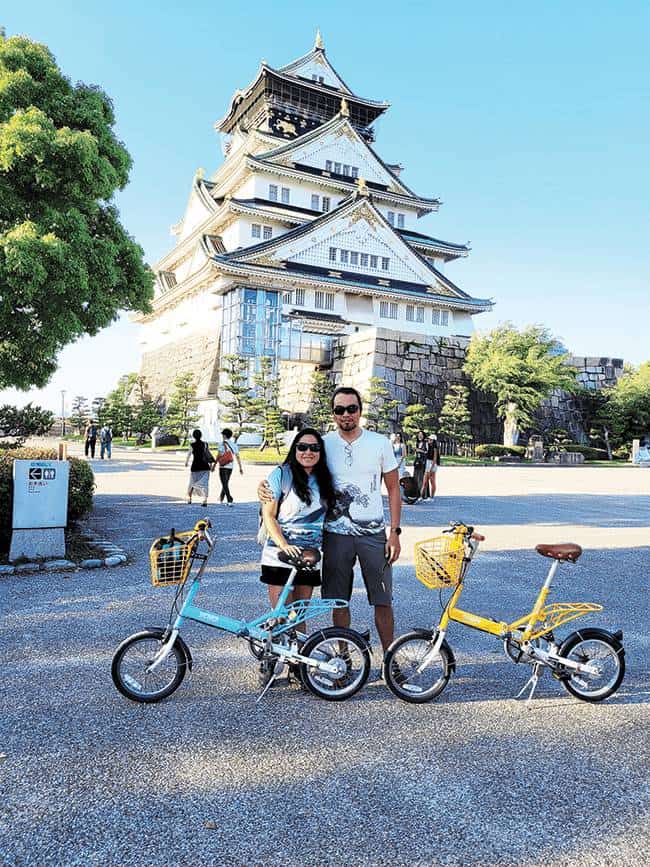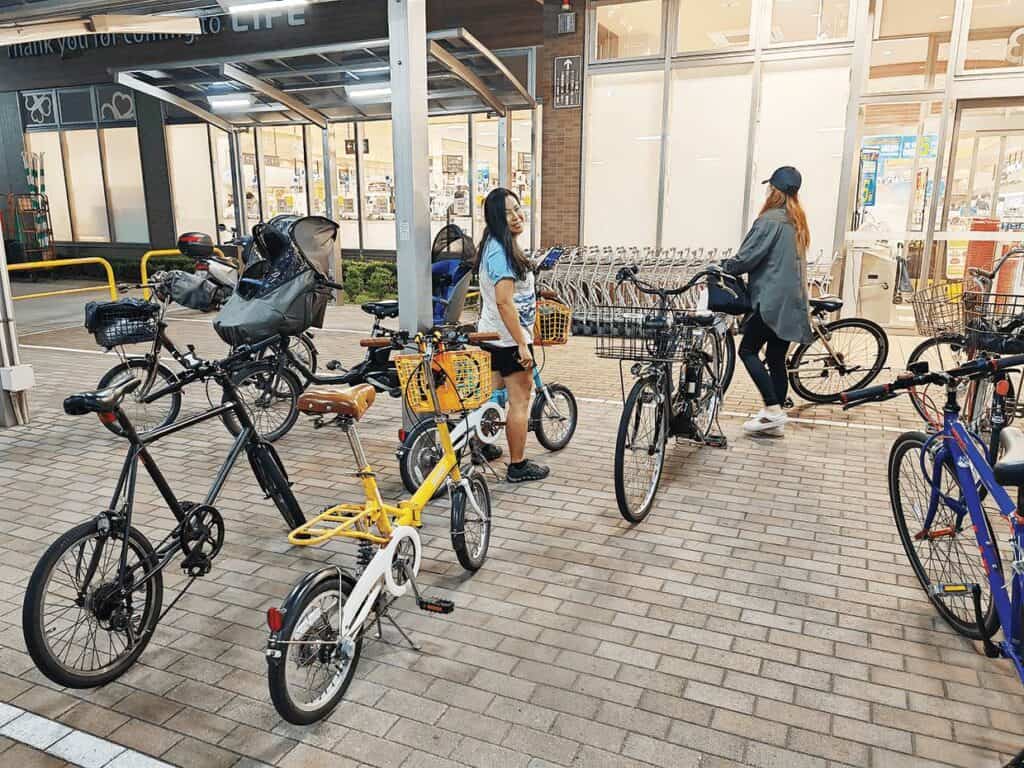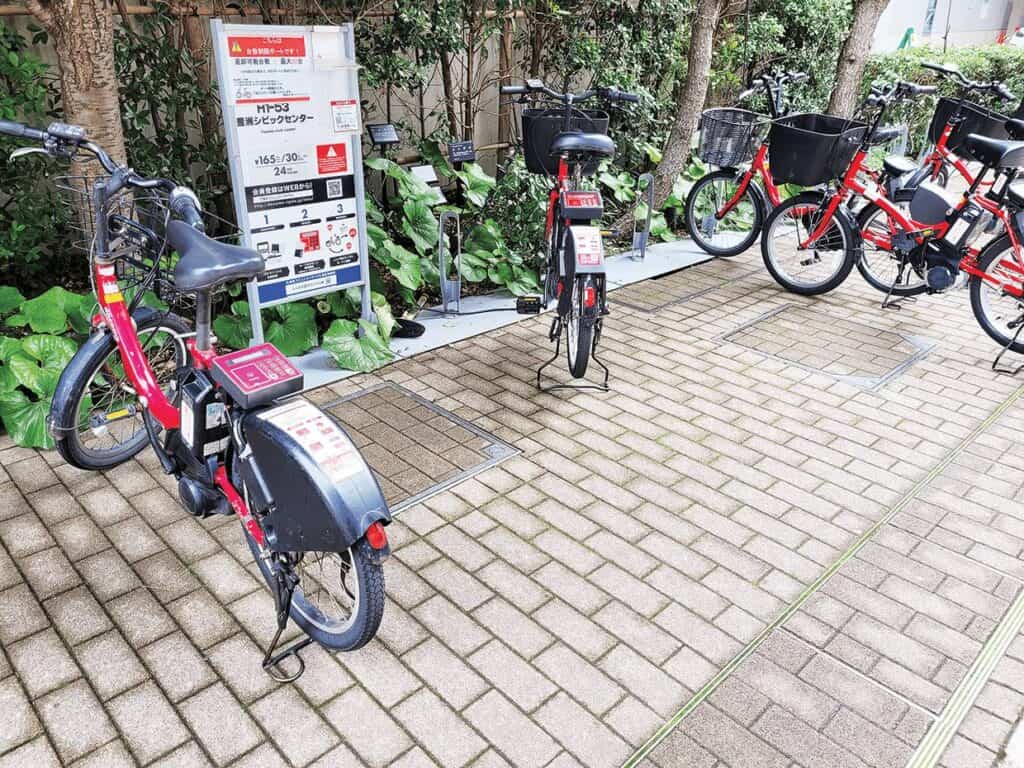On a recent family trip to Osaka in Japan, my husband and I rented folding bicycles to go around in between sightseeing tours and amusement park visits. One afternoon, we biked around Osaka Castle and the waterfront Nakanoshima Park. Another night, we found ourselves following the long riverside route leading to Yodogawa River Park and Yodo River on two wheels.
If you’ve ever been to Japan, you know how ingrained biking is in Japanese culture. While most rely on the superb public transportation system of trains and subways to get around, a large percentage of locals use bicycles too. You can find bikes parked outside homes, shops, and restaurants everywhere you go.
According to a report by Sportify Cities, bicycles are the second-most popular commuting option in Osaka next to trains, with approximately 30% of commuters choosing to ride bikes.

While there’s been a bike boom in the Philippines since the pandemic, our roads are still very car-centric, and not very safe for cyclists. For most Pinoys, biking is either a necessity for the working class, or a hobby/lifestyle for others. But in Japan, biking is a way of life.
As we pedaled through the well-designed bike paths, along shaded green routes accessible by ramps and pedestrian walkways, and busy thoroughfares around Japan’s third-largest city, we encountered people from all walks of life on bikes.

Biking is not just for delivery riders or sports enthusiasts. Elderly salarymen in suits head to izakayas riding iconic Mamachari utility bikes. Young women in skirts and heels park their bicycles with baskets right outside convenience stores to go shopping. Mothers can easily cross busy streets while carrying two kids on bike carriers on their way to parks. Biking around felt so safe and normal in Japan.
Here’s what I noticed about Japan’s bike culture that I hope someday could be a reality for the Philippines.

Clear bike paths
On city streets, there are clear signs on the road, usually the left-most lane, allotted for bicycle users. However, many sidewalks can be used by both pedestrians and cyclists. Locals seem to prefer using the sidewalks for convenience, so we just followed their lead. Road crossings also have designated cycle lanes next to pedestrians.
Green routes
For those who want to avoid traffic lights, Osaka has an extensive network of cycling paths along riverside parks. I appreciated how well-designed the paths were, with ramps on the main bridges leading down to the green spaces. This way, cyclists can get around the quieter river-front atmosphere for free without having to ride crowded trains.
How I wish the length of Pasig River, which is about 25 km long, and other river channels could be revived with bike lanes and foot paths with easy connections to the 19 bridges along the main highway as an alternative route.
Designated bicycle parking areas
Japan has a low crime rate, so it’s normal for locals to leave their bicycles unlocked when they park. We spotted large dedicated bicycle parking areas near railway stations and shopping centers. Some buildings have multi-story parking garages for exclusive use by bicycles. Other buildings have pay bicycle parking systems, with the first two hours free or affordable rates of 100 yen (Php 38.31) per day.
Wide network of bicycles-sharing programs
Before we were able to rent traditional bikes, we tried to use the bike share system, which requires registration on a website or app, a smartphone and local SIM, data plan and international credit or debit cards to unlock.
There’s a network of bicycle and electric bike sharing services widely used in Japan like Docomo Bike Share, HubChari, Luup, and Hello Cycling, with bike docks placed mostly near train stations and malls hubs. The fee varies on the company, location, and length of use and rates are usually set on a short time basis.
For Docomo Bike Share, it costs 165 yen (approx. P64.16) for the first 30 minutes and 165 yen for every additional 30 minutes. Luup has both e-bikes and e-scooters that cost 50 yen (P19.45) after unlocking, plus 15 yen per minute after. A thirty-minute ride can be a bit pricey, so it’s not really the best option for whole day rentals, but rather short trips in between main hubs, when walking might be too far.
Respect for sharing the road
In Japan, everyone rides as they are regardless of age, gender, occupation, or class – without fearing for their safety. Helmets aren’t even needed thanks to the discipline of all road users. Japan is very used to cyclists and everyone is generally very polite. Cycling around felt pretty stress-free compared to cycling around Metro Manila streets where you constantly encounter speeding vehicles and irate car drivers who honk their horns relentlessly at you, and motorcycles who overtake on bike lanes.
Car drivers were very respectful of cyclists and pedestrians, and automatically stopped on turns to give us right of way while crossing streets.
If you ever find yourself in Osaka, I recommend taking a break from riding the trains for a day and try cycling around to experience what sustainable mobility is all about for yourself.

